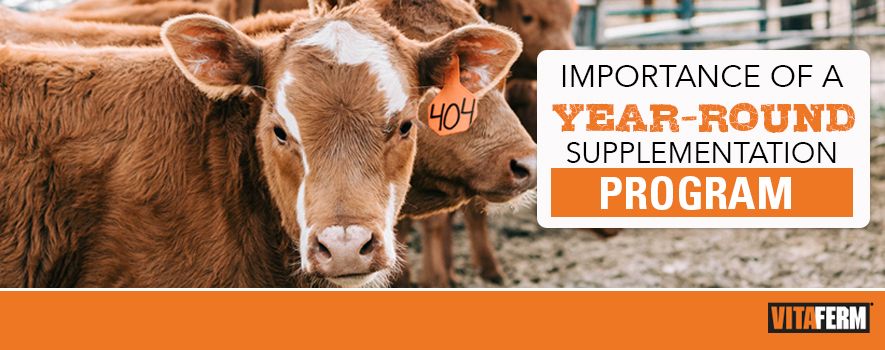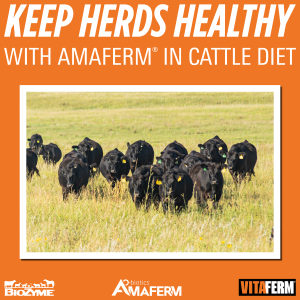Chris Cassady, PhD, Beef Technical Sales Manager, BioZyme® Inc., St. Joseph, MO

Cow nutritional requirements fluctuate throughout the annual production cycle. For spring calving herds, most calves have been weaned and cows are in midgestation. Collectively, this current timepoint represents the lowest nutritional requirement for that cow. Available forage quality decreases at the same rate as cow requirements on a normal year, but as we have seen in drought conditions, forage quality has dwindled at a much more rapid pace. Supplementation has always been the best method of “bridging the gap” between available forage and nutrient requirements, and its benefits are well understood when supplementing cows and heifers leading up to calving and through rebreeding. Nutrition is still a year-round process and there are many profitable means of delivering quality nutrition annually.
The concept of matching cow requirements to available resources is simple to understand but difficult to achieve. One major thing I recommend is to test your grasses, hay or any type of available forage to get an idea of what they contain nutritionally. Most producers are surprised at the results, both positive and negative. Providing cattle with a proper supplement that contains adequate minerals is important, as it serves as an “insurance policy” for seasonal fluctuations in forage quality and can keep cattle from becoming deficient or imbalanced in energy, protein or mineral status. Deficiencies can sometimes be hard to detect, but later show up in the form of health problems or reduced performance. Either way, providing the cow as well as her developing calf with proper nutrition can benefit any producer in the long run.
The unique feature of the VitaFerm Conserve® line of products from BioZyme® Inc., is that they deliver Amaferm® carried on your mineral supplement. Amaferm is a prebiotic designed to enhance digestibility by amplifying the nutrient supply from within. It stimulates fungal and bacterial growth in the rumen. These stimulated microbes work synergistically to further break down feed ingredients, leading to improving fiber (NDF) and CP digestion by 17 and 10 percent, respectively. The stimulation of bacteria is economically relevant because more bacteria growing means more fermentative capacity and microbial protein synthesis. Research proves that cattle fed Amaferm synthesize 143 more grams of microbial protein each day. That’s enough protein equivalent to a pound of supplemented soybean meal available for the cow or heifer. This additional protein generated from Amaferm in a year-round supplemental program can help producers reduce their need for additional protein by up to 40% annually, a huge continuous savings on feed costs.
Speaking of controlling feed costs, overconsumption is a common complaint many producers have when supplements are first introduced. This happens because cattle may not have received sufficient prior nutrition or been exposed to palatable feed ingredients. If you ate nothing but lettuce for 6 months and someone slid a bowl of chocolates or pretzels in front of you, you’d likely eat more than normal because of these very reasons. Keeping free-choice supplement in front of cattle daily controls the big swings in intake and consumption. This not only keeps energy, protein and trace mineral status of your herd stable but controls waste. Feed and supplement waste is a frustrating sink on your bottom line.
Nutrition is the only environmental aspect of production where producers have full control. The VitaFerm Conserve products provide an economically viable way to ensure that cattle receive a daily dose of Amaferm, maintain stable levels of nutrition and control annual supplement waste. When considering the impacts of inputs and outputs, providing year-round supplementation to cows can be an economical tool to maximize production efficiency.
To learn more about the VitaFerm Conserve options or to find a dealer near you, visit www.vitaferm.com.


